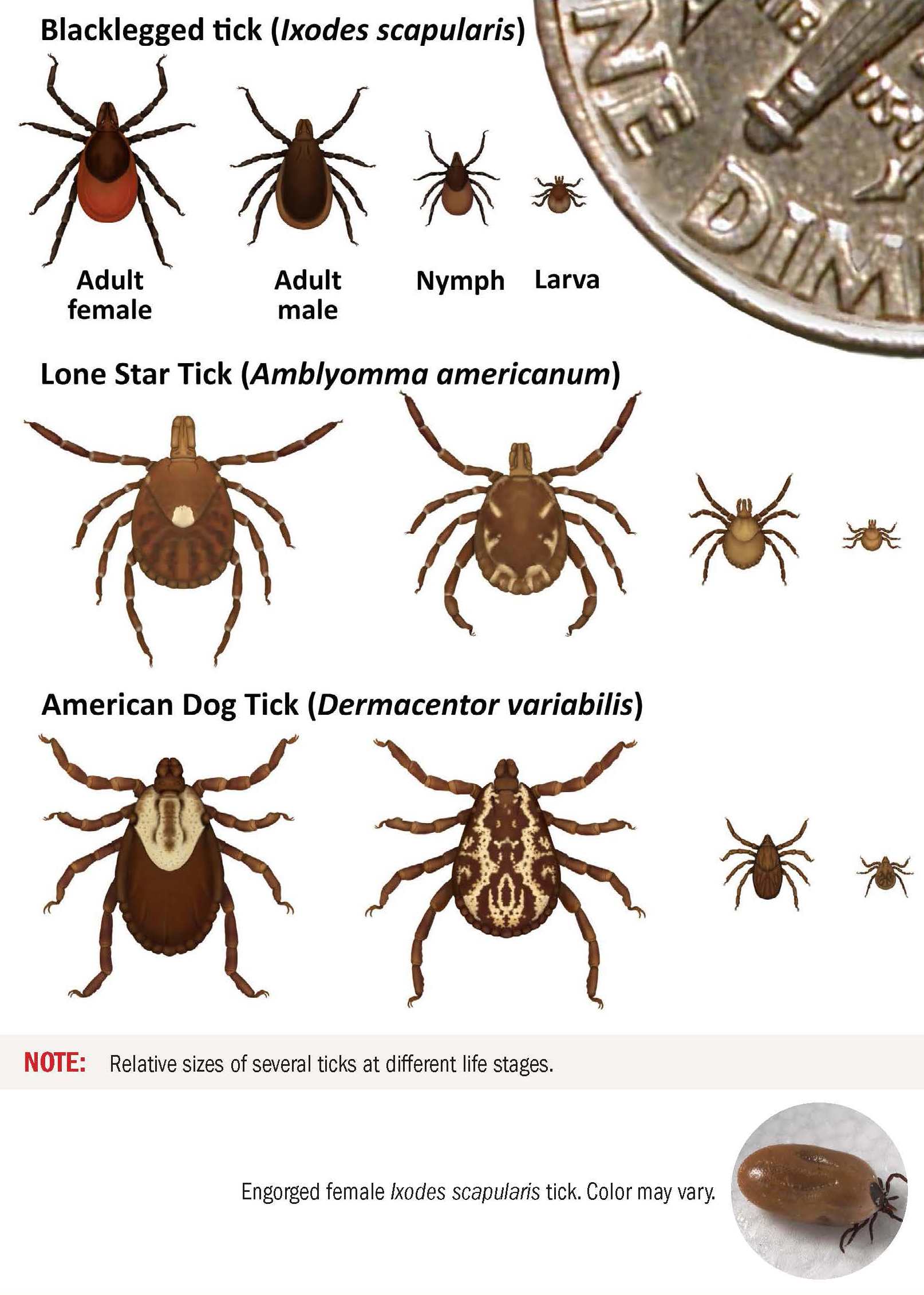Alpha-gal syndrome: How a tick bite can make you allergic to meat
October 4, 2023
Quick links: Symptoms | Diagnosis | Treatment | Prevention

For many carnivores, particularly in beef-loving Texas, the thought of acquiring an allergy to red meat from the bite of a “lone star” tick sounds like a cruel joke.
But the emergence of alpha-gal syndrome, which causes some people to develop a long-term allergy to red meat and other animal food products, is very real. A recent study by the Centers of Disease Control and Prevention (CDC) showed alpha-gal syndrome may affect up to 450,000 people in the U.S. and that number is rising as warmer temperatures create a more favorable environment for the expansion of lone star tick populations.
Many people with alpha-gal syndrome go undiagnosed for years because nearly half of health care providers have little or no knowledge of the condition, which has only come into focus in the last decade or so. And clinicians who have heard of it may not know how to diagnose it.
Alpha-gal syndrome is different from most food allergies because it sensitizes a person to a sugar, not a protein. It takes its name from galactose-alpha-1,3-galactose, a sugar present in the meat of most mammals but not humans or apes. Lone star ticks transmit alpha-gal through their bite. Some patients’ immune systems develop allergic antibodies to the sugar which cause an allergic reaction the next time the person eats the meat of mammals, such as beef, pork, and lamb.

The allergic reaction can range from mild to severe. While some people may have only mild abdominal pain, others may develop hives, nausea, diarrhea, or in rare cases they could go into anaphylactic shock after eating mammalian meat.
As awareness, research, and news coverage surrounding alpha-gal syndrome grows, let’s take a closer look at its causes and symptoms and answer some common questions about this allergic condition.
What is a lone star tick?
Despite its name, the lone star tick did not originate in Texas. The name comes from the tick’s single star-shaped white or silver spot on its back.
Historically found mostly in the Carolinas and Southeastern states, the lone star tick’s range has expanded in the last couple decades, in part due to warmer weather, and it can now be found as far west as Texas and as far north as Maine.
While alpha-gal syndrome is not as prevalent in North Texas as it is in the Southeast, the lone star tick is becoming more common here, and you don’t need to go hiking in the countryside to find them. They can be live in high grass or brush in your yard. So be on the lookout for them. If you get a bite, remove the tick, wash and clean the area thoroughly. Call your doctor if you develop symptoms such as a rash or fever, which could be signs of an infection.
Which foods contain alpha-gal?
Alpha-gal is in meat and products made from mammals such as:
- Beef
- Pork
- Lamb
- Venison
- Rabbit
Certain cuts of meat may contain more alpha-gal than others, including organ meat of mammals such as:
- Liver
- Kidneys
- Intestines (tripe)
- Sweetbreads
- Calf fries

A few foods that don't contain alpha-gal:
- Poultry, such as chicken and turkey
- Fish and seafood
- Eggs
- Fruits and vegetables
While less common, some people with alpha-gal syndrome may be allergic to other foods derived from mammals, such as:
- Dairy products
- Gelatin made from beef or pork, such as gummy candies
- Products made from or cooked with mammalian fat, such as lard
- Meat broth, bouillon, stock, and gravy
- Medications or vaccines that are derived from animals
What are the symptoms of alpha-gal syndrome?
Unlike most food allergies, which cause distress minutes after eating, symptoms of alpha-gal syndrome usually don’t appear until two to six hours after exposure. You can develop alpha-gal syndrome even if you’ve never had food allergies before.
Alpha-gal syndrome can cause a wide range of symptoms, including:
- Hives or rash
- Nausea or vomiting
- Stomach pain and cramping
- Diarrhea
- Shortness of breath or difficulty breathing
- Drop in blood pressure
- Swelling of the lips, tongue, or throat
- Dizziness or faintness
Not every person with alpha-gal syndrome reacts the same way, and one person can experience different symptoms with each reaction. For example, you may break out in hives one time and have nausea and vomiting the next.
When should you see a doctor?
Seek immediate medical attention if you experience symptoms of a severe allergic reaction, such as trouble breathing, swelling of the tongue or throat, rapid and weak pulse, or dizziness or fainting.
If you find yourself experiencing frequent uncomfortable symptoms, such as diarrhea or stomach upset, see your health care provider. Don’t rule out a food allergy just because the symptoms begin hours after you ate. Seek out or ask for a referral to an allergist who has experience with alpha-gal syndrome because other food allergies and syndromes can mimic it, and you’ll want to get the right diagnosis.
How is alpha-gal syndrome diagnosed?
It’s not unusual for people with alpha-gal syndrome to go months or even years before being diagnosed. Because this is a recently recognized condition, some health care providers are still unaware of it. Its wide-ranging symptoms often are attributed to other conditions – particularly gastrointestinal problems. It can take hours for symptoms to begin after eating meat, so it may take a few reactions to connect that steak dinner you enjoyed with the hives or diarrhea you are experiencing later.
Diagnosis begins with discussing your personal health history, symptoms, and timing of symptoms after eating mammal food products. We’ll also ask if you remember being bitten by a tick. More than 85% of people with alpha-gal syndrome recall being bitten by a tick.
A blood test can confirm the diagnosis by measuring the amount of allergic antibodies to alpha-gal in your bloodstream. There is a high false-positive rate to this test, which means it may come back showing you have alpha-gal syndrome when you actually don’t. That is one reason it is beneficial to have the test done by an allergist who has experience with alpha-gal syndrome and can accurately interpret the results.
Related reading: What pregnant women need to know about Lyme disease
How is alpha-gal syndrome treated?
As with any food allergy, the treatment for alpha-gal syndrome involves avoiding the foods that cause a reaction. Ask your allergist for a list of foods to avoid, including meat extracts that are used in flavoring. Always check the ingredients on store-bought foods to ensure they don’t contain mammalian meat or meat-based ingredients.
Be extra careful when you eat at a restaurant or friend’s house. Awareness of meat allergies and the symptoms they cause is relatively low. Your doctor may prescribe an EpiPen or other medication to carry in case accidental exposure to mammalian meat causes a severe reaction in the hours after you eat it.
Will I have alpha-gal syndrome forever?
There is a lot of research being done regarding this question, but it does appear that for some people the symptoms of alpha-gal syndrome may lessen or even disappear over time. However, it’s possible for symptoms to reappear if you are bitten again by a tick carrying alpha-gal.
Work with your allergist to determine whether and how to safely reintroduce mammalian food products back into your diet.
What can I do to prevent alpha-gal syndrome?
Preventing tick bites is the most important thing you can do to avoid alpha-gal syndrome, as well as other tick-borne illnesses such as Lyme disease.
Follow these simple tips to reduce your risk of tick bites:

- Use an Environmental Protection Agency (EPA)-registered insect repellent.
- Treat your clothing (not your skin) with permethrin spray to repel insects.
- Wear long-sleeve shirts and pants when you walk in grassy or wooded areas.
- Stick to trails and avoid walking through low bushes and long grass.
- Check yourself, your kids, and your pets for ticks when returning from the outdoors and ask for help to examine places you can’t see or touch, such as your back.
- If you see a tick, remove it immediately and wash the area thoroughly.
- Tick-proof your yard by clearing brush and leaves.
As the lone star tick continues to expand its range across the country, we’re likely to see more cases of alpha-gal syndrome. Increased awareness and knowledge of the condition will be crucial to making sure patients get a prompt diagnosis and proper treatment for their symptoms.
If you believe you or a loved one might have alpha-gal syndrome, call 214-645-8300 or request an appointment online.











